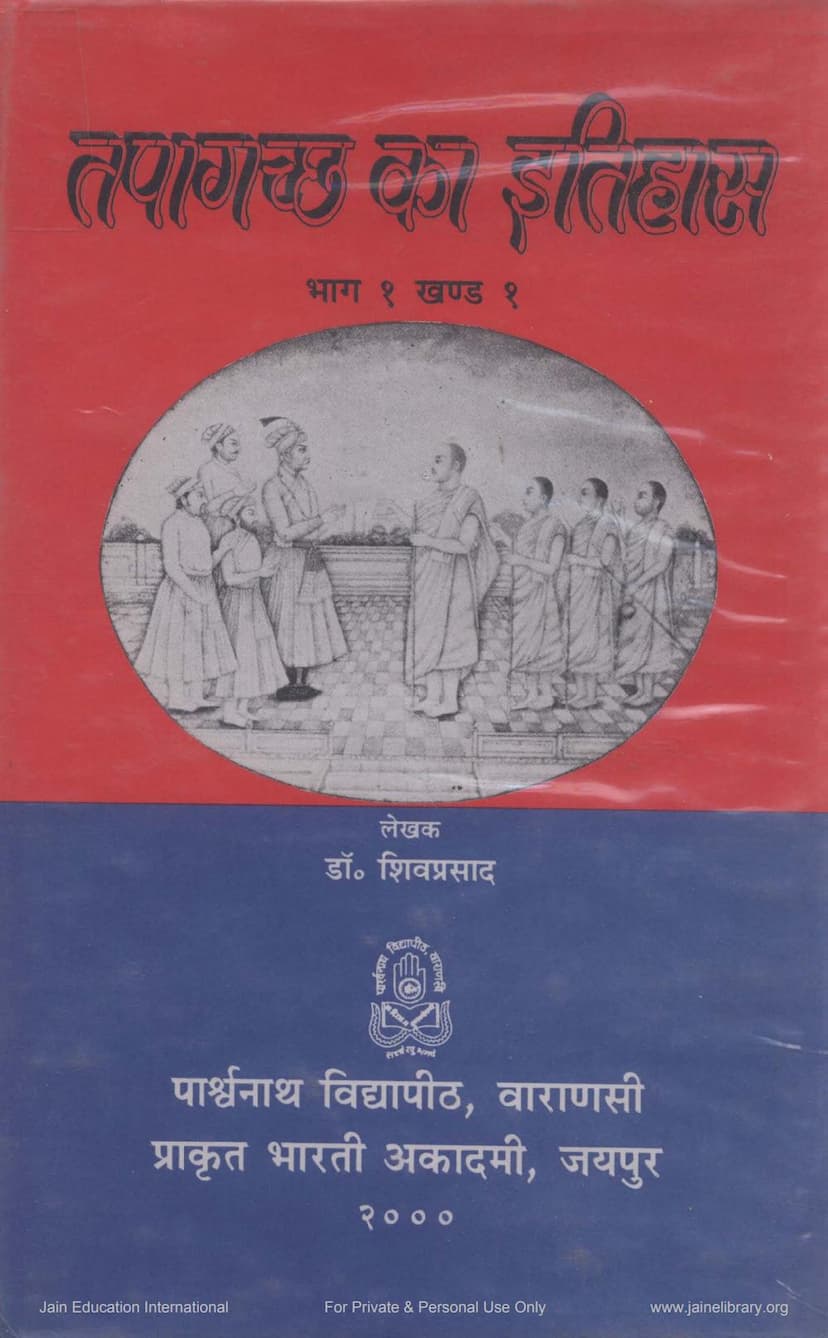Tapagaccha Ka Itihas
Added to library: September 2, 2025

Summary
This document is the first volume, first part of the history of the Tapagaccha, written by Dr. Shivprasad and published by Parshwanath Vidyapith, Varanasi, in collaboration with Prakrit Bharti Academy, Jaipur, in the year 2000.
The Tapagaccha holds a paramount position within the Shvetambara Murtipujaka community. Its origin traces back to Vira Samvat 1285 (approximately 1229 AD) when Acharya Jagachandrasuri received the epithet "Tapa" from Jaitrasimha, the ruler of Aghatpur. His lineage of disciples became known as Tapagaccha. The tradition has continued unbroken from Jagachandrasuri to the present day.
The book highlights the significant scholars and influential figures within the Tapagaccha, including:
- Som Sundara Suri
- Acharya Hiravijayasuri (who influenced Emperor Akbar)
- Upaadhyaya Yashovijaya Ji
The text states that, similar to other gacchas, the Tapagaccha also branched out into various sub-branches over time. The book aims to provide a detailed and researched account of these branches.
Volume 1, Part 1 specifically covers the history of the Tapagaccha from its inception up to the 20th century. It details the acharya tradition and its various branches. The content is structured into chapters, starting with the fundamental sources for studying the history of gacchas, then delving into the history of the Tapagaccha itself, its branches, and concluding with a comprehensive bibliography.
Key sources utilized for this historical account include:
- Praise verses (Prashastis) found at the end of ancient texts, which often mention the lineage of acharyas, their time, their field of work, and their contributions to societal upliftment and literature.
- Pattavalis (genealogical records of acharyas), which are crucial for understanding the succession and history of the gacchas.
- Inscriptions on images and stone inscriptions, which provide epigraphic evidence of the activities of the acharyas, patrons, and rulers.
The book meticulously traces the lineage of acharyas from Jagachandrasuri to Munisundara Suri in Chapter 2, and continues the history from Ratnashekhara Suri up to the 20th century in Chapter 3. Chapter 4 focuses on the Brihad Paushalik branch of the Tapagaccha. The subsequent chapters detail other branches such as the Kamalkalash branch, Kutubpura branch, Laghu Paushalik branch (also known as Soma branch), Rajavijayasuri branch (also known as Ratna branch), Sagar branch, and Vimal branch.
The initial sections of the book emphasize the importance of both literary and archaeological evidence for reconstructing the history of religious communities and their various branches, particularly within the Shvetambara Jain tradition. The author details the types of literary sources, such as colophons in manuscripts (prashastis) and pattavalis, and epigraphic sources like inscriptions on images and in temples. The book also provides an extensive list of relevant published catalogues of Jain manuscripts and inscriptions, highlighting the thoroughness of the research.
The text further elaborates on the founding of the Tapagaccha by Acharya Jagachandrasuri, his renunciation of the Brihadgaccha due to perceived laxity, and his re-initiation under Deva Bhadragaṇi of the Chaityagaccha. The conferral of the title "Tapa" by King Jaitrasimha is presented as the origin of the "Tapagaccha" name for Jagachandrasuri's lineage. The book also mentions the subsequent development of various sub-branches originating from the main Tapagaccha, listing prominent ones like Brihad Paushalik, Kamal Kalash, Kutubpura, Laghu Paushalik (Soma), Rajavijayasuri (Ratna), Sagar, and Vimal branches.
The author, Dr. Shivprasad, has diligently compiled this history over many years, filling a significant gap in the research on Jain gacchas. The book is presented as a scholarly endeavor, aiming for accuracy and comprehensiveness.